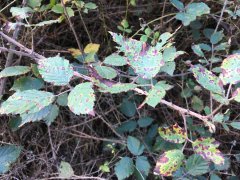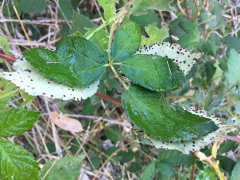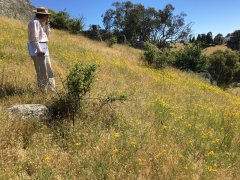Past Projects
Project Summary
Project Details
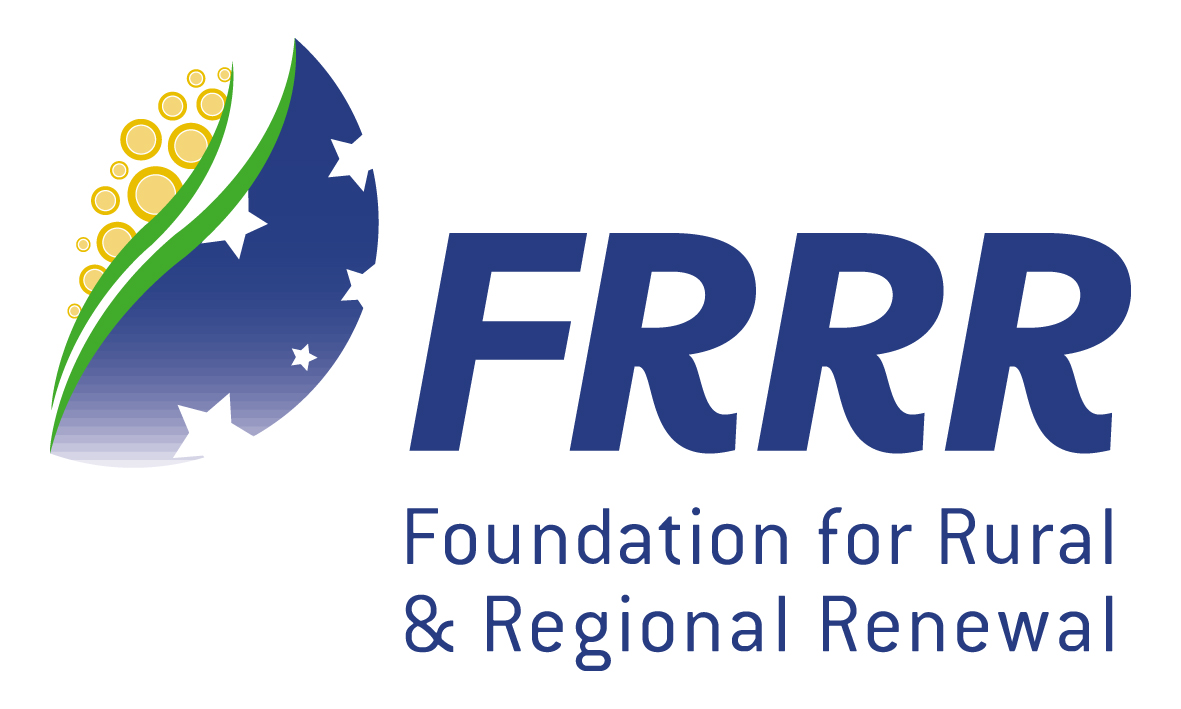

Thanks to funding from the Foundation for Regional Renewal under the Tackling the Tough Times Together program, and its donor partner Stockland CARE Foundation, HCLG was able to run six workshops for members during 2019 on strategies for managing during times of drought. The aims of the program were to provide helpful information, reduce social isolation by bringing people together and reduce volunteer fatigue by funding a co-ordinator to run the workshops.
We hosted experts speaking on topics ranging from how to navigate through managing mental health to the latest research on decision-support tools to help manage through the current drought and plan for future droughts.
The workshops were well attended and provided good support and information for members.
The details of the workshops were as follows:
- 16 August 2019 - HCLG co-sponsored the Boorowa Community Landcare Group symposium on 'Resilient Farming Communities - Planning for Climate Uncertainty' in Boorowa. John Harper talked about 'mates helping mates' in difficult times. Participants took home tips and strategies for engaging in safe, trustworthy, and collaborative interactions which minimise stress, de-escalate challenging situations and enable recovery.
- 30 August 2019 - HCLG 'Managing Dry Times' workshop at Frogmore
The theme of the workshop was exploring current and future strategies to manage climate variability into the future. The speakers were:
- Professor Mark Howden, Director of the Climate Change Institute at ANU, who gave an overview presentation on climate change
- Phil Graham, Technical Specialist Livestock Systems at DPI who spoke on the implications of climate change for pasture growth and animal production and
- Dr Melinda Hillery, NSW Government Climate Change Adaptation regional team member, DPIE, who spoke on the implications of climate change for our community, including floods, drought, community infrastructure.
A link to a Powerpoint summary of the presentations can be found below.
- 13 February 2020 - Laura Rayner talked to the HCLG members’ meeting about the implications of climate change on the welfare and distribution of the Superb Parrot.
- 27 February 2020 - Visit to Mulloon to talk about rehydrating catchments
The Mulloon Institute in Bungendore is a research, education and advocacy organisation that demonstrates on-ground regenerative agriculture practices for sustainable and resilient environments. The visit was hosted by Landscape Rehydration Project Coordinator, Peter Hazell, who explained the background and work of the institute. The day included an inspection of the work done on the property.
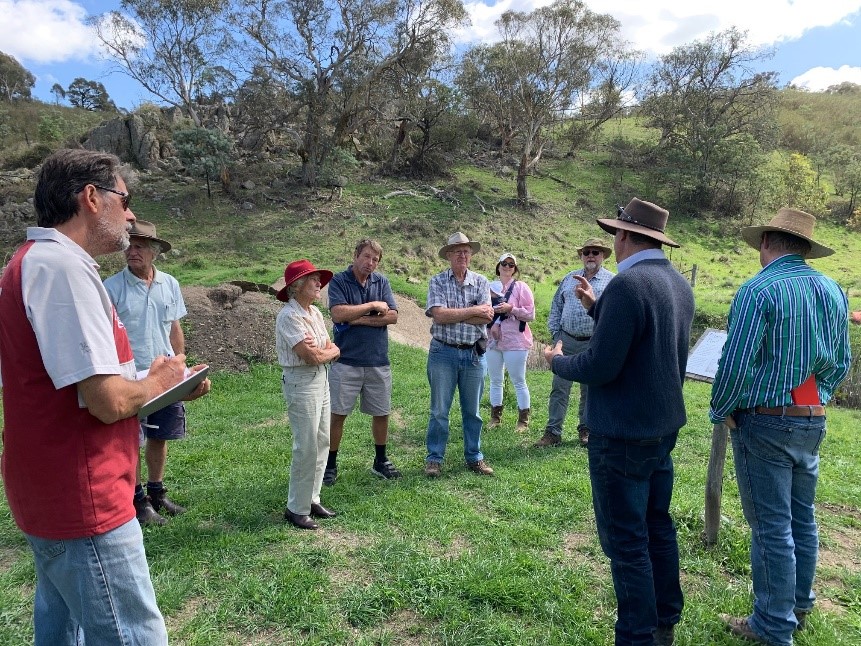
Members at the Mulloon Institute visit
- 13 March - the second HCLG 'Managing Dry Times' workshop at Frogmore
The speakers included:
- Geoff Casburn, Livestock development officer at NSW DPI, who demonstrated the Drought and Supplementary Feed Calculator App and Web Application, the next generation of the Drought Feed Calculator;
- Matt Lieschke, Senior Agricultural Advisor, Local Land Services, who spoke on how soil moisture data and modelled pasture projections can help producers in their decision making at critical stages of the season; and the pros and cons of confinement feeding (“drought lots”) as a drought management tool;
- Dr Nola Hancock, post-doctoral researcher at Macquarie University, who spoke on revegetation practice in relation to climate change;
- Richard Hayes, Senior Research Scientist at DPI who spoke on the role of perennial-based pastures in providing groundcover, using episodic rainfall and growing year-round forage for livestock. He provided a summary of the most viable species presently available for long-term pastures and some tips about improving establishment following drought.
- Dr Susan Orgill, Soil Scientist with DPI, who spoke on how management practices influence carbon cycling on farms and the major drivers for increasing soil carbon.
A link to a Powerpoint summary of the three presentations can be found below.

‘Managing the Dry Times’ presenters from L to R: Geoff Casburn, Dr Susan Orgill, Dr Nola Hancock, Richard Hayes and Matt Lieschke
- 26 September 2020. The final forum was the September 2020 HCLG members’ meeting where the topic for discussion was how everyone has coped with the drought. Members discussed strategies they used and how well they worked.
Advice/lessons learned by members included:
- Don’t plant trees in Spring during drought. Plant in April to June
- Tree planting works best during drought (and other times) if assisted with water crystals and seasol
- Agriform fertiliser tablets are an alternative to seasol and can be put in with each tree planted
- Clean out dams during drought in preparation for rain
- Consider destocking earlier rather than later – feeding can be very expensive
- Overstocking was a problem for many. Some felt that the DPI definition of DSE was inadequate and only about 60% of the recommended DSE should be considered during drought
- If rotating stock to rest paddocks for 90 days, 60 days feed left is a trigger for destocking
- Some had sacrificial paddocks where they kept most of the stock
- Destocking paddocks with gullies helped to maintain groundcover, reduce erosion and maintain water clarity in the gullies
Resources
Mark Howden presentation at first FRRR workshop August 2019
Phil Graham presentation 30th August 2019
Melinda Hillery presentation Aug 30th 2019
Susan Orgill presentation March 13th 2020
Richard Hayes presentation March 13th 2020
Matt Lieschke presentation 1 March 13th 2020
Matt Lieschke presentation 2 March 13th 2020
Nola Hancock presentation March 13th 2020
Managing Dry Times Media Article
Geoff Casburn's presentation of Drought & Supplementary feeding App




Steve Austin, who once headed a federal quarantine operation and has used his dogs in ‘Search and Rescue’, visited properties in the Hovells Creek Landcare Group for a week during 2016, to help control a feral cat problem.
Steve identified cats we did not know we had, but not the cats we thought we had seen but were not able to catch in the recent past. The ‘theory’ on this latter group is that they had dispersed with the good season to hunt in new areas. Steve gave us excellent advice on how to trap cats, leaving us with no doubts about how very difficult it is to find feral cats in the first instance and how hard it is to trap them. From the work he did in the first week, we identified three locations to focus our efforts. We also found one location where we did not need to place any efforts at all (a surprise and a relief). Steve gave our group a fantastic talk on his training methodology, his work with Taronga Zoo on koalas and penguins and with NPWS on clearing rabbits from Macquarie Island in the Southern Ocean.

Project Summary
Hovells Creek Landcare Group Inc Paddock Trees Project Case Study
Project Details
LINKING PADDOCK TREES FUNDED BY THE NSW ENVIRONMENTAL TRUST
Why Paddock Trees?
Scattered paddock trees are disappearing from our landscape. Many are more than 100 years old and when they die, they aren’t being replaced naturally because self-set trees are grazed by stock and so don’t get a chance to become established. Paddock trees provide shelter for birds, bats, insects, reptiles and mammals. They also support agricultural productivity through helping manage salinity, improving soil properties and providing shelter for stock. It is therefore important that they be replaced.
Grant Funding
In May 2016 HCLG was awarded $89,990 by the NSW Environmental Trust to cover the planting in the Hovells Creek area of 1,500 paddock trees within individual stock proof guards over the three-year period 1 Sept 2016 to 30 August 2019.
The Approach
The trees were planted as linking trees to provide connectivity between existing patches of trees and shrubs. Guidance for the planting layouts is based on a series of Habitat Connectivity Plans prepared in 2016 and 2017 by a consultant, Susie Jackson, for 13 individual properties. The objective was to plant paddock trees at 30-50m intervals within a 50m or even 100m wide corridor, so that birds, insects and small animals could use them as a bridge between existing patches of trees and shrubs. Actual on-farm layouts were sometimes modified from Susie Jackson’s original plans to take account of specific on-farm land use requirements. Where a property did not have a Habitat Connectivity Plan prepared then the requirement was that they follow the general principles behind the planting of connectivity trees.
2017 Plantings
A bulk order for rolls of tree mesh and steel posts was placed in late-2016 and was distributed to members in early-2017. In addition to the mesh and steel posts members were also provided with bulk grant-funded tube stock trees, weed mats, canes and plastic protectors by a local nursery. The original grant commitment was for 500 trees to be planted per annum across 10 properties. However, with careful buying of materials and some redesign of the project, it proved possible to plant 670 trees across 21 properties in 2017.
Advice to members on tree planting was provided through provision of a set of planting notes plus a list of recommended tree species for the various types of land where the trees are to be planted eg valley flats, granite hills and lower slopes. Lack of rain was a major obstacle to plantings, causing much of the planting to be delayed until late in the season, which meant that the young trees had only limited time to establish themselves before the dry and hot weather of summer. That notwithstanding, survival rates exceeded 95 per cent.
Monitoring of the results of the 2017 plantings was undertaken by HCLG’s Landcare Support Officer (LSO) and a copy of her report was submitted to the NSW Environment Trust in late-2017 as part of the group’s annual report to the Trust.
Feedback from the Trust on its review of HCLG’s annual report was very positive, including the comment that, “The Grantee should be highly commended for their level of commitment to both the on-ground activities implemented by landholder members, and the detailed information contained in the monitoring and financial reports.”
2018 Plantings
For 2018 materials were supplied to HCLG members to cover the planting of 678 trees across 22 properties. Members were only provided with trees and planting materials in 2018 who had either completed their 2017 plantings, or who had been obliged to delay their plantings in 2017 for personal or weather-related reasons.
Two changes in emphasis occurred in 2018. First, participating members were encouraged where consistent with their linking tree layout, to plant their trees along drainage lines or in gullies. This means that the planting conditions are often easier, as the ground is damper. Also, birds, insects and small animals have a preference for trees planted along drainage lines.
The second change was that members were encouraged to space their linking trees rather closer together to allow for some tree mortality over the next 100 years. This is a lesson which emerged from a talk given by Mason Crane to HCLG in early-2018.
2019 Plantings
2019 was the final year of the project and plantings were done on much the same basis as those in 2017 and 2018. A total of 1800 trees were planted across 22 properties over the three years.
JRB 5 June 2018, updated LSO 26 August 2020
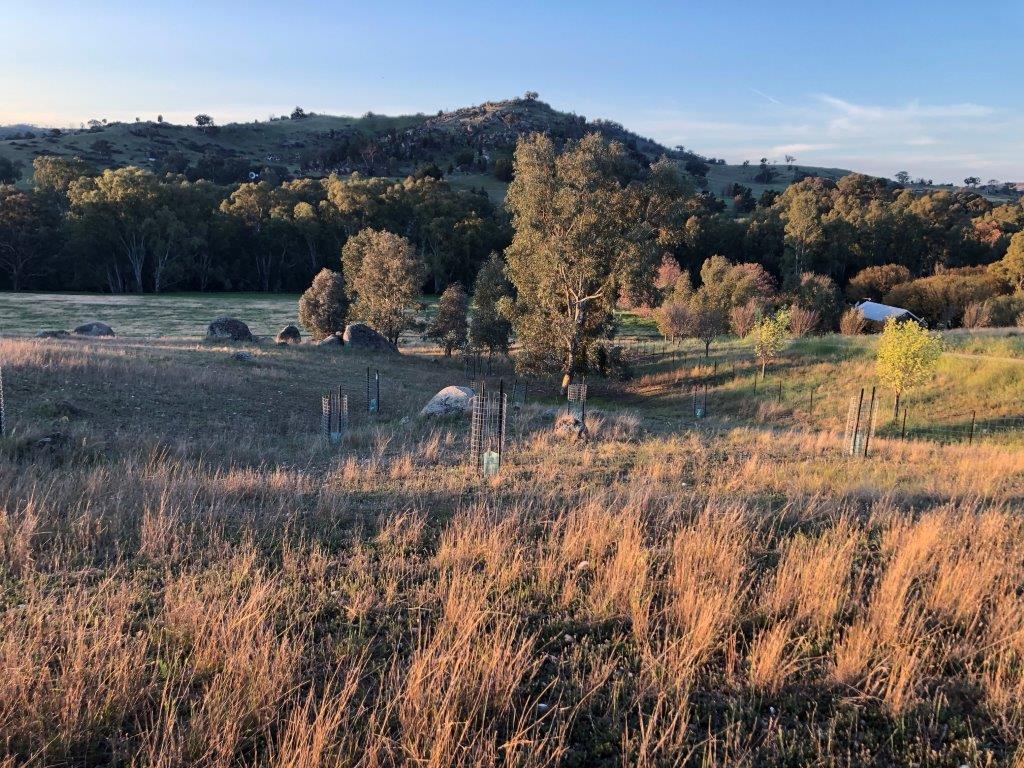

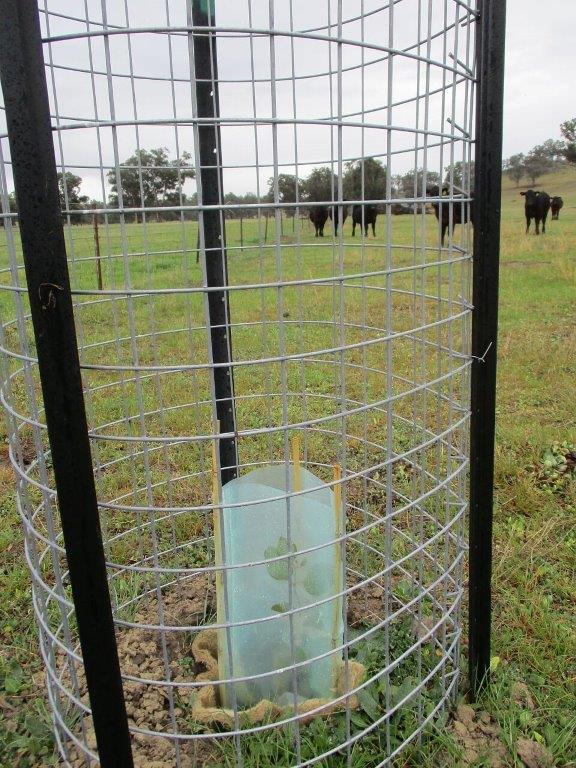
Paddock Tree Planting at Hovells Creek, NSW (9.20 mins)
Provides an overview of how to plant tube stock paddock trees.
Hints on Using a Power Planter to Plant Paddock Trees (4.42 mins)
Using a Power Planter augur to drill holes for tube stock tree planting, especially in dry or hard ground.
Hints for Making Steel Mesh Tree Guards (8.25 mins)
Cutting up rolls of steel mesh to make tree guards for paddock trees.
Hints for Successful Kurrajong Paddock Trees (2.24 mins)
Growing on tube stock Kurrajongs for a year prior to planting out as paddock trees.
Why We Should Plant Paddock Trees in Early-Autumn (4.46 mins)
Examines the benefits of planting tube stock paddock trees in autumn (April/May) instead of in spring.
Resources:
THE PROBLEM
Two of the principal weeds affecting grazing country on the granite hills and slopes around Hovells Creek are Blackberry and St John’s Wort. Both weeds are long established in the area and if not controlled are capable of taking over large areas.
While St John’s Wort can be controlled to a degree by grazing at the right time of year by merino sheep, this is very difficult to achieve in large paddocks in hilly rocky country because of the tendency of sheep to preferentially graze the higher areas of each paddock. Similarly, blackberry can be controlled by grazing with goats, but again this is not practical in large hilly paddocks with ordinary sheep fencing that can allow goats to escape.
So the current control method in the area for both blackberry and St John’s Wort is spraying with herbicide. However, this is expensive, very difficult to achieve in hilly country and the experience is that repeat spraying is required in later years.'
ADOPTION OF BIOLOGICAL CONTROL APPROACH
Over the years there have been repeated attempts to use biological control agents to control Blackberry and St John’s Wort. However, this is an approach which has not been actively pursued in the Hovells Creek area in recent years.
In 2015, the HCLG Executive became aware of the recent release of new and different strains of blackberry leaf rust in areas of Victoria and areas adjacent to the Snowy Mountains. Similarly, there was talk of areas of St John’s Wort near Wyangala Dam (on the northern border of the Hovells Creek area) being killed by combined attacks by mites and beetles released there some years previously. It was therefore decided to investigate these possibilities and John Baker, Deputy-Chair of HCLG, was made project manager for the investigation and related work.
- BLACKBERRY LEAF RUST
In mid-March 2015 HCLG organised the release of blackberry leaf rust on five properties in the HCLG area at a cost of $1,000, which was paid from HCLG’s own funds. The objective was to create a number of ‘nurseries’ where the blackberry leaf rust could establish itself and which could then be used as sources for multiple releases of blackberry leaf rust from October 2015 onwards. The intention was to seek other funding to support these future releases and to run workshops to familiarise members on how to release the rust etc.
The leaf rust was sourced from Barry Sampson, an ex-CSIRO staffer, whose Deniliquin-based Weedbiocontrol business was able to supply a relatively new strain of blackberry leaf rust which, while it does not initially kill the plants significantly weakens them, including preventing fruiting and limiting their further spread. HCLG was told by Barry that it had been used in the Adaminaby and Canberra area with significant success, but has not previously been released in the central west NSW area.
The leaf rust was released by Barry Sampson together with the project manager at Old Graham in mid-March 2015, where he made two releases of leaf rust onto two geographically separate and distinct patches of blackberries on Old Graham. Present on the occasion were several other landowners who took other sets of leaf materials for release on their own properties, having seen how Barry fastened the rust-infected leaves onto those of healthy blackberry bushes.
In mid-2016 HCLG received $3,500 funding from SELLS, as part of a wider Community Industry and Landscapes Fund project, to support work on weed control, including biological weed control. The intention was to use the funds to help promote the spread of the blackberry leaf rust and to also support work on the release of the mites and beetles that affect St John’s Wort.
However, inspections in the autumn of 2016 of the five sites where the blackberry leaf rust had been released showed no evidence of the rust. Barry Sampson advised that two other release locations at Crookwell and Bigga had similarly reported no active rust and he wondered whether the rust-infected plant material supplied to us in March 2015 had been off the plant at Adaminaby for too long, such that the rust was no longer potent. Barry agreed to supply replacement rust-infected plant materials, but by the time these discussions and investigations had been completed it was too late in the season to supply replacement plant materials in 2016.
In 2017 Barry Sampson had moved to the north coast of NSW and so on his advice the project manager contacted rangers in the ACT Environment, Planning and Sustainability Directorate, whom Barry Sampson had previously supplied with the same strain of blackberry rust. Arrangements were then made for the project manager to collect rust-infected plant materials in March/April 2017 from the Curries Road release site off the Brindabella Road fairly high in the Brindabella Mountains. These were put in a cooler box with some ice in the bottom to keep the leaves fresh and the same day they were driven to Hovells Creek where they were released at four sites off the Frogmore Road, including two on Old Graham. Unfortunately, as of autumn 2018 there was no sign that the rust had established itself at any of the release sites.
Extensive reading of the literature on blackberry leaf rust, and discussions with Jason Corcoran of the Southern Slopes Noxious Plant Authority, suggests that climatically the Hovells Creek area may be beyond the range of the blackberry leaf rust – including of the newer strains, other than in warm wet summers. Unfortunately the area has had hot dry summers recently, so the prospects do not look promising for blackberry rust.
- ST JOHN’S WORT MITES AND BEETLES
In the summer of 2014 the project manager, on the advice of Jason Corcoran of the Southern Slopes Noxious Plant Authority, arranged for half a wool bale of mite and beetle-infected St John’s Wort to be collected from a property near to Wyangala Dam where the St John’s Wort had been seriously attacked by mites and beetles. The infected plant materials was then distributed at a number of points on Old Graham and on neighbouring Kondon.
Subsequently in the spring of 2015 several slopes on Old Graham, which had previously had a dense cover of St John’s Wort, and where the infected plant materials was released, were seen to be largely clear of St John’s Wort. Careful examination showed that 80 per cent of plant stems (it is a perennial) were dead and rotten, while 20 per cent had very small shoots, but no significant growth.
In mid-2016 HCLG received $3,500 funding from SELLS, as part of a wider Community Industry and Landscapes Fund project, to support work on weed control, including biological weed control. The intention was to use the funds to help promote the spread of the blackberry leaf rust and to also support work on the release of the mites and beetles that affect St John’s Wort.
In 2016 the slopes remained effectively clear of wort, although there were occasional small plants with only limited flowers and hence few seeds. The infection of the mite and beetles had spread over the brow of the hill and in the summer of 2016 could be seen moving down an adjoining hill. Again we spread infected plant material to other areas of wort.
After a very wet winter and spring in 2016, 2017 was a disappointing year as there was moderate re-infestation by wort of the slope cleared in 2015 and the mites and beetles no longer seemed to be actively spreading and attacking other areas of wort.
In spring 2017 beetles were in evidence across much of Old Graham and Kondon, at a light density of one beetle to every few clumps of wort. Unfortunately after a period of wet and cold weather no beetles were in evidence and none were seen during the summer of 2017/18. In the meantime wort had recolonised previously clear areas and we now seem to be back where we started in 2015, although in the meantime wort has also spread to previously unaffected areas.
Discussions with a Landcare group in Queanbeyan and reading of various studies of the use of biological control on St John’s Wort suggest that what occurred at Old Graham is very typical. One can have good years when mite and beetles really decimate the wort, followed by other years when the wort seems to be barely affected by mite and beetles. As with blackberry rust, climate and variations in the weather appear to be a key determinant. Unfortunately there seems to be no published research which describes the sort of climate and weather which supports the activity of the mite and beetles and what weather is inimical to their growth and spread.
Results to date suggest that it is therefore premature to try to encourage HCLG members to actively spread wort and beetles as a worthwhile control measure of St John’s Wort. This prompted HCLG to seek approval to reallocate the SELLS CILF funding to other purposes, as it was not thought it could usefully be used to run a workshop to promote the spread of blackberry and wort control measures.
JRB 5/6/18
Blackberry
Rust-infected blackberries at the Curries Rd release site in the Brindabella Mountains, ACT
https://hovellscreeklandcare.org.au/images/blackberry/Blackberry-Leaf-at-Brindabella.jpg
Rust-infected blackberry leaves from Curries Rd release site stapled onto blackberry leaves at a new release site at Hovells Creek
https://hovellscreeklandcare.org.au/images/blackberry/Blackberry-Leaf-Stapled.jpg
Inspecting St John’s Wort on hillside at Old Graham to check for mite and beetle damage
https://hovellscreeklandcare.org.au/images/blackberry/St-Johns-Wort.jpg



